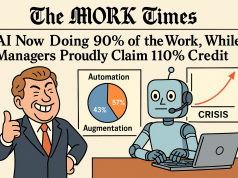In the labyrinthine corridors of government agencies, where policies and decisions ripple out to affect millions, communication is not just a tool but the very sinew that connects the body of public service. Yet, there lurks a silent divide, a chasm in the bedrock of our public institutions that threatens to undermine the integrity and efficiency we so depend on. As an experienced Human Resources Professional, I have witnessed the subtle shifts and the not-so-subtle fractures that poor communication can cause within the public sector. Now, more than ever, it’s crucial to bring these issues to light and explore solutions that can mend the widening gap.
Over the past decade, the methods and modalities of communication within government agencies have been transformed on an unprecedented scale. The advent of digital communication platforms, the rise of social media, and the relentless pace of technological innovation have all played a part. Yet, alongside these advancements, there has been a growing sense of disconnect, as employees grapple with information overload, siloed departments, and an often impersonal touch to internal dialogue.
The root causes of these sweeping changes are multifaceted. On the one hand, technology has enabled faster and more wide-reaching communication than ever before. On the other hand, it has often served to replace rather than enhance the personal, face-to-face interactions that foster trust and mutual understanding. The increased pressure on public servants to do more with less – to cut costs whilst enhancing service delivery – has also contributed to a stressful environment where communication becomes more about dictation than discourse.
This communication breakdown affects workplace dynamics in various ways. It leads to a sense of isolation among employees, hinders collaboration, and can create an environment where misunderstandings flourish and morale plummets. For the public, whom these employees serve, it can result in opaque processes, delayed services, and a general erosion of trust in government institutions.
Thankfully, emerging technologies offer a beacon of hope. With robust internal communication platforms, social intranet solutions, and advanced project management tools, there are ample opportunities to bridge the communication gap. Implementing such solutions, however, requires a carefully considered approach. It is not enough to simply introduce a new system; agencies must also nurture a culture that values open dialogue and collective problem-solving.
Moreover, methodologies such as active listening training, regular team-building exercises, and structured feedback mechanisms can help encourage a more communicative and collaborative environment. When done right, these technologies and methodologies can transform the landscape of government communication, fostering a culture where information flows freely and individuals feel connected to the mission and each other.
Personal anecdotes from government employees often shed light on the reality of working within a communication-starved landscape. These stories form the bedrock of our examination into the state of communication within the public sector. Furthermore, case studies where communication breakdowns were successfully addressed offer hope and guidance for future remediation.
Addressing the silent divide is not a task for the faint-hearted. It requires concerted effort, commitment at all levels, and a willingness to embrace change. By shining a spotlight on the challenges and exploring the intricacies of this issue, we aim to not only mitigate the risks associated with communication failures but to celebrate and champion the successes of those who have turned the tide. Together, we can ensure that the arteries of our public institutions are clear and robust, pulsing with the lifeblood of effective communication that serves and sustains us all.




























